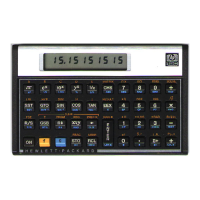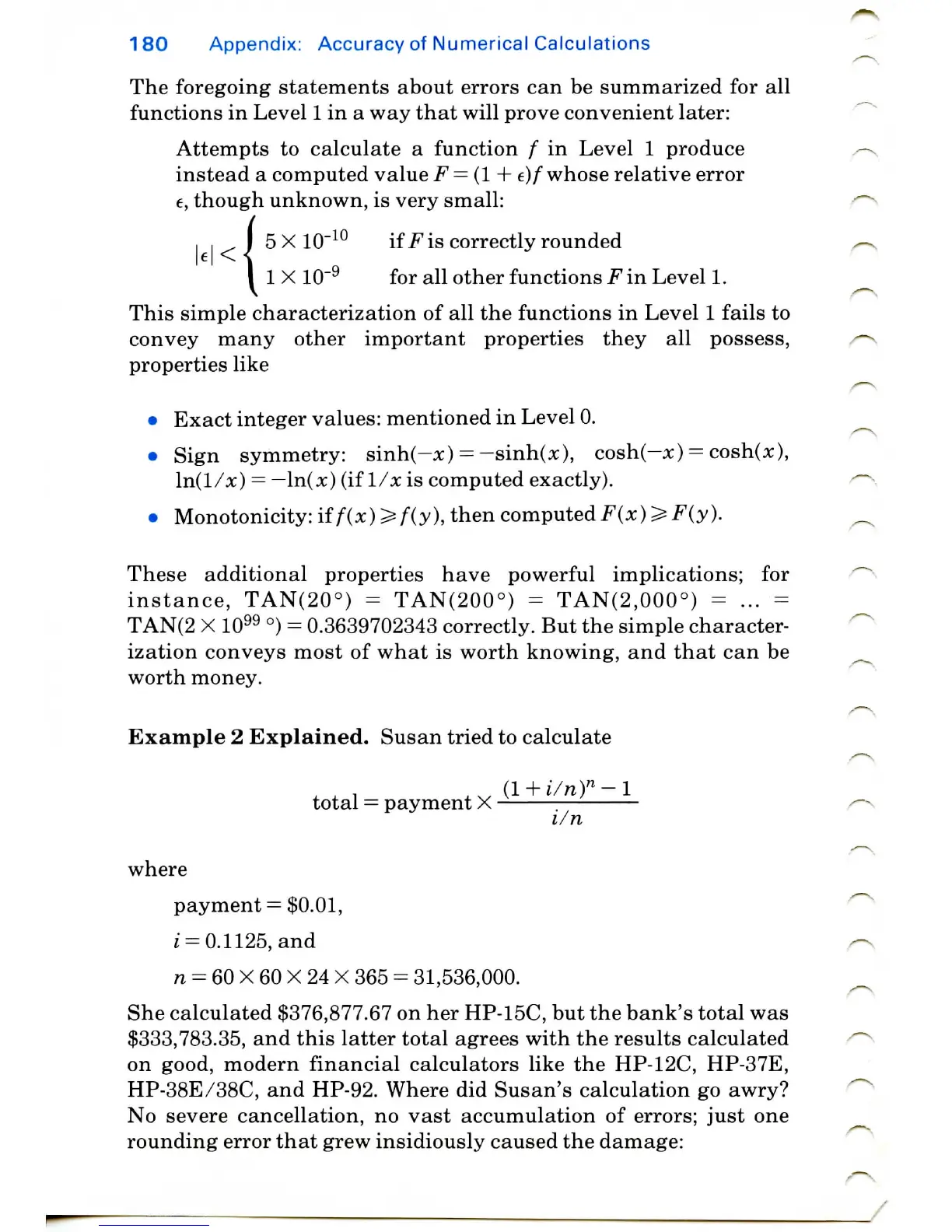180
Appendix: Accuracy
of
Numerical Calculations
The foregoing statements about errors can be summarized for all
functions
in
Level
1 in a way
that
will prove convenient
later:
Attempts
to
calculate
a
function
/ in
Level
1
produce
instead
a
computed value
F
—
(1 +
e)/
whose relative error
e,
though unknown,
is
very small:
I
5 X
10"10
if
Fis
correctly rounded
I
1 X
10~9
for all
other functions
F in
Level
1.
This
simple characterization
of all the
functions
in
Level
1
fails
to
convey
many other important properties they
all
possess,
properties like
•
Exact integer values: mentioned
in
Level
0.
•
Sign
symmetry:
sinh(-^)
=
-sinh(x),
cosh(-x)
=
cosh(jc),
ln(l/x)
=
—
ln(x)
(if
l/x
is
computed exactly).
•
Monotonicity:
if
f(x)
^
f(y),
then
computedF(x)
^F(y).
These additional properties have
powerful
implications;
for
instance,
TAN(20°)
=
TAN(200°)
=
TAN(2,000°)
= ... =
TAN(2
X 10" °) =
0.3639702343 correctly.
But the
simple character-
ization conveys most
of
what
is
worth knowing,
and
that
can be
worth
money.
Example
2
Explained.
Susan
tried
to
calculate
total
=
payment
X
i/n
where
payment
=
$0.01,
/
=
0.1125,
and
re = 60 X 60 X 24 X 365 =
31,536,000.
She
calculated $376,877.67
on her
HP-15C,
but the
bank's
total
was
$333,783.35,
and
this
latter
total
agrees
with
the
results calculated
on
good, modern financial calculators like
the
HP-12C, HP-37E,
HP-38E/38C,
and
HP-92. Where
did
Susan's
calculation
go
awry?
No
severe cancellation,
no
vast
accumulation
of
errors; just
one
rounding error
that
grew insidiously caused
the
damage:

